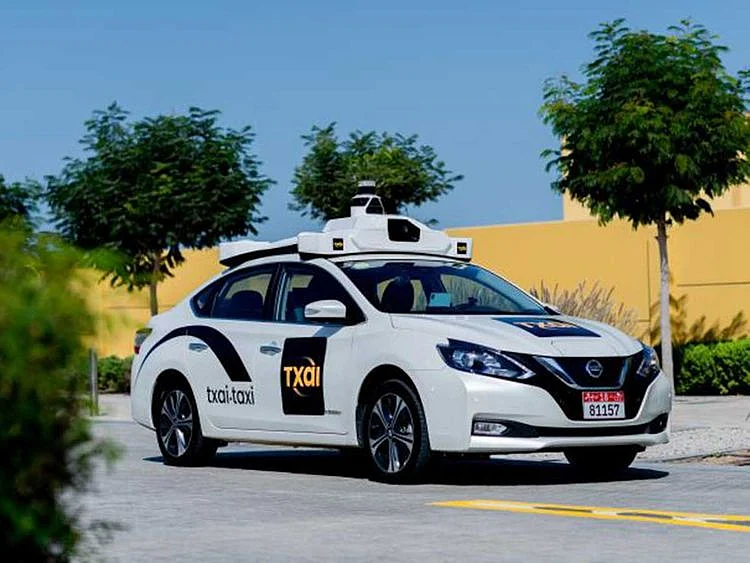UAE has humanised the autonomous driving experience
Recent initiatives in Abu Dhabi and Dubai offer a glimpse of driverless mobility’s future

Innovation and invention are two robust phenomena fueled by human ingenuity and a need to push boundaries. There is no doubt to the fact that we are living through a technological renaissance and no country symbolizes this like the UAE with the recent announcements of the first pilot phase of TXAI, a new service that utilises self-driving taxis to transport passengers on Yas Island in Abu Dhabi and the first driverless, autonomous 12-seater shuttle that will transport students and staff around the Sas Al Nakhl Campus at the Khalifa University in Abu Dhabi. The driverless, all-electric shuttle is one of the first autonomous vehicles to be deployed in the UAE in a 'mixed traffic mode', referring to the vehicle’s capabilities to drive alongside other vehicles. The announcements highlight the UAE’s commitment towards contributing to Abu Dhabi's Vision 2030 targets and development of autonomous vehicles in the country.
The autonomous driving sector has elevated and revolutionized something as mundane as driving; producing vehicles capable of self-awareness, anticipating needs and making decisions for the driver. Artificial intelligence in vehicles is expected to provide the highest degree of responsibility by learning to predict user behaviour and even make compatible, reliable decisions to provide an enhanced driving experience. According to studies, artificial intelligence is expected to contribute $320 billion to the Middle East's GDP by 2030.
Dubai’s Autonomous Transportation Strategy is another great initiative by the UAE that aims to transform 25 per cent of the total transportation in Dubai to autonomous mode by 2030, saving AED 22 billion in annual economic costs. These initiatives showcase the strides that the UAE is taking towards the adoption of artificial intelligence to serve humanity and establish a global model of the city of the future.
In today’s age, most vehicles feel safer and more comfortable on the road being equipped with driver assistance systems, display and infotainment systems. Having come a long way since the introduction of the ‘cruise control’; connectivity, automation and new drive solutions will surely have a significant impact on the automotive industry going forward. Automakers have made significant progress through the SAE levels 1 & 2 of autonomy which enable driver assistance system and support the driver performing both sustained longitudinal and lateral vehicle motion control in defined use cases.
As automotive manufacturers across the globe begin to improve upon their autonomous capabilities to fulfill the next level of innovations in the autonomous space, it is imperative to assess the human aspects of driving at all levels ranging from conditionally automated to highly automated driving. The core of automated driving is driver assistance at all levels which several companies realised years ago and strongly follow the path of developing safe and connected mobility right from the innovation stage. The human aspects of driving are analysed by collecting data related to the driver’s influencing factors and taking differential corrective measures for unfavorable behaviours. This could range from how people drive in a particular area, at what speed, in what type of car, and in what specific weather conditions.
Developing open technology platforms focusing on highly integrated development toolchains and vehicle-related cloud-platform services are key to speeding up and simplifying the manner vehicle software is developed, tested and deployed. With automated and networked driving becoming the bright future of mobility, it's more necessary than ever to equip vehicles with advanced safety technology and automated driving features so that the driving experience may become more personal. The UAE in this regard, continues to serve as a regional benchmark being the first in the Arab world to implement cutting-edge technical infrastructure and develop safer roads accelerating digital transformation in every aspect of human life.
While it may be some time before self-driving cars can replace human drivers completely, innovations such as electric drive, assistance systems and software-defined vehicles have simplified and advanced the integration systems within vehicles and furthermore hold the potential for new offerings. Moreover, for autonomous driving to be mass deployed, a vehicle needs to be able to do everything a driver can do; it has to be able to perceive and understand its surroundings, process the information, plan a driving strategy, and safely implement the planned driving strategy. It is commendable to see the UAE’s focus on developing smart technologies and this will definitely play a significant role in the adoption of automated vehicles in the region.
- The writer is General Manager, Robert Bosch Middle East
Sign up for the Daily Briefing
Get the latest news and updates straight to your inbox
Network Links
GN StoreDownload our app
© Al Nisr Publishing LLC 2025. All rights reserved.